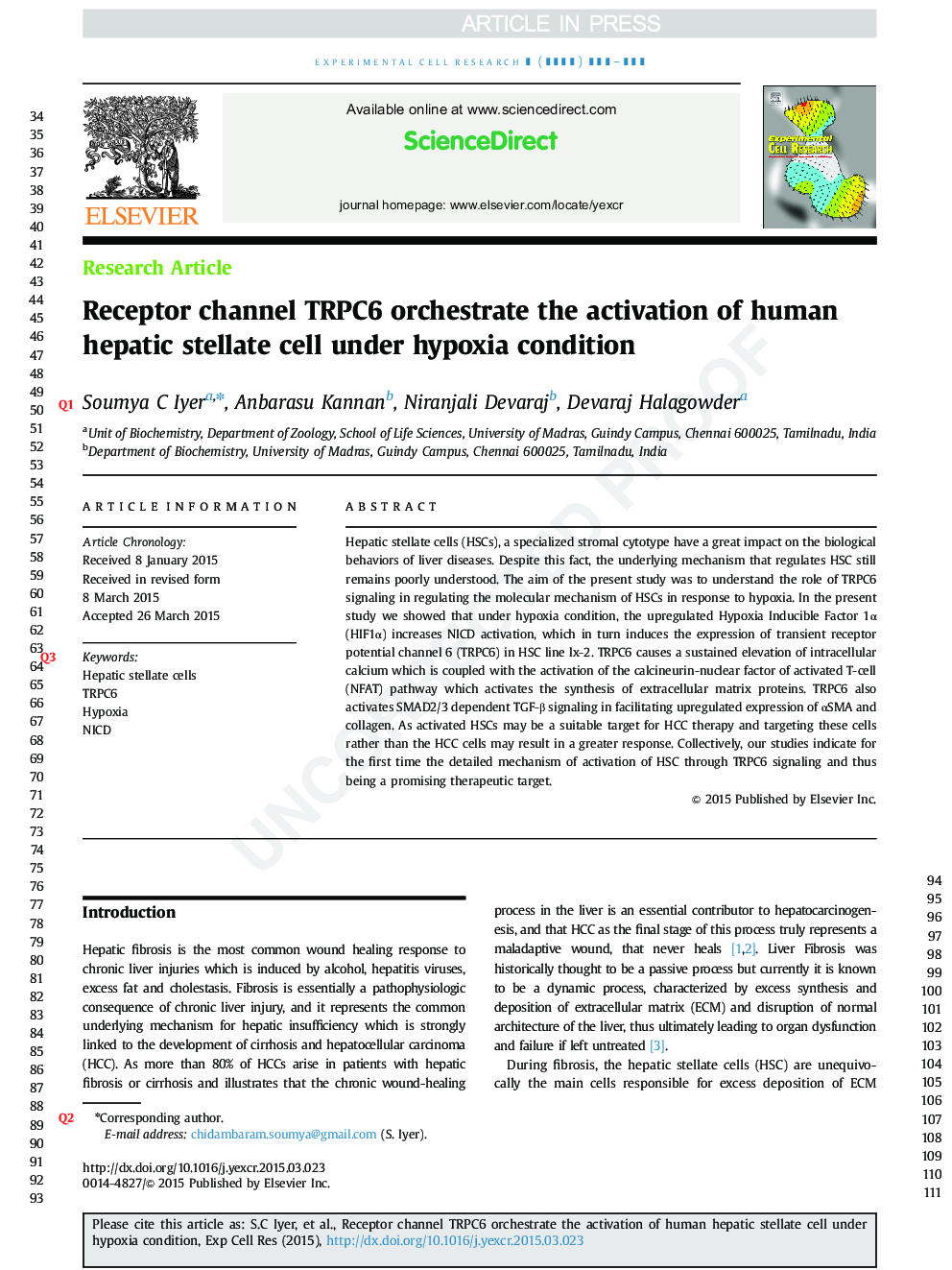| Article ID | Journal | Published Year | Pages | File Type |
|---|---|---|---|---|
| 10903866 | Experimental Cell Research | 2015 | 10 Pages |
Abstract
Hepatic stellate cells (HSCs), a specialized stromal cytotype have a great impact on the biological behaviors of liver diseases. Despite this fact, the underlying mechanism that regulates HSC still remains poorly understood. The aim of the present study was to understand the role of TRPC6 signaling in regulating the molecular mechanism of HSCs in response to hypoxia. In the present study we showed that under hypoxia condition, the upregulated Hypoxia Inducible Factor 1α (HIF1α) increases NICD activation, which in turn induces the expression of transient receptor potential channel 6 (TRPC6) in HSC line lx-2. TRPC6 causes a sustained elevation of intracellular calcium which is coupled with the activation of the calcineurin-nuclear factor of activated T-cell (NFAT) pathway which activates the synthesis of extracellular matrix proteins. TRPC6 also activates SMAD2/3 dependent TGF-β signaling in facilitating upregulated expression of αSMA and collagen. As activated HSCs may be a suitable target for HCC therapy and targeting these cells rather than the HCC cells may result in a greater response. Collectively, our studies indicate for the first time the detailed mechanism of activation of HSC through TRPC6 signaling and thus being a promising therapeutic target.
Related Topics
Life Sciences
Biochemistry, Genetics and Molecular Biology
Cancer Research
Authors
Soumya C Iyer, Anbarasu Kannan, Ashidha Gopal, Niranjali Devaraj, Devaraj Halagowder,
